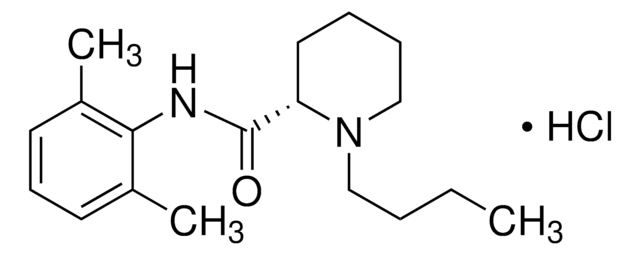NXF-50
Natrix® Adsorbente membrana Q
Sinónimos:
Natrix® Q Membrane Adsorber
About This Item
Productos recomendados
ligand
quaternary amine
Quality Level
product line
Natrix®
parameter
2.3-11.5 L/min flow rate
bed H
0.5 mm
bed volume
460 mL
matrix active group
Macroporous polymer
pore size
0.4 μm pore size
capacity
92 g binding capacity (BSA)(per device)
separation technique
strong anion exchange
shipped in
ambient
¿Está buscando productos similares? Visita Guía de comparación de productos
General description
Natrix® Q chromatography membrane is a high productivity strong anion exchange membrane designed for biomolecule purification. The unique Natrix® Q chromatography membrane is a porous polyacrylamide hydrogel containing a high density of pendant quaternary ammonium (Q) binding groups that are directly polymerized within the an inert, macroporous membrane scaffold. The interconnected pore structure and high functional group density enables fast flow rates (seconds of residence time) with impressive throughput to extremely high loads while maintaining excellent impurity reduction across a wide range of buffer conditions. The Natrix™ Q chromatography membrane design delivers improvements in productivity, flexibility, and process robustness and economics for any bioprocess design. The Natrix® Q Process 600 is process scale device designed for full-scale clinical and commercial manufacturing.
mAb nominal polishing capacity: 4600 g
Membrane configuration: Pleated
1 device per package
Features and Benefits
- High density of quaternary amine binding sites enabling rapid mass transfer
- High binding capacity even at fast flow rates
- Combination of performance and speed in, single use, plug-and-play device format enables low risk, scalable solutions for efficient biomolecule purification.
Packaging
Legal Information
Not finding the right product?
Try our Herramienta de selección de productos.
Related product
Certificados de análisis (COA)
Busque Certificados de análisis (COA) introduciendo el número de lote del producto. Los números de lote se encuentran en la etiqueta del producto después de las palabras «Lot» o «Batch»
¿Ya tiene este producto?
Encuentre la documentación para los productos que ha comprado recientemente en la Biblioteca de documentos.
Artículos
Membrane adsorbers are a cost-effective, robust, single-use solution for monoclonal antibody polishing
See case study examples of how to optimize chromatographic purification of plasmid DNA for Biopharmaceutical Applications.
A custom-designed cost model is used to explore the economics of vaccine manufacturing across several different modalities including mRNA. The model enables greater process understanding, simulates bottlenecks, and helps to optimize production efficiency.
Influenza vaccines are commonly made using egg-based and cell-based manufacturing strategies. Find step-by-step information on the manufacturing process for each method.
Contenido relacionado
This technical article breaks down the adenovirus vaccine manufacturing process and provides a case study on developing an accelerated and cost-effective single-use adenoviral vector vaccine.
Nuestro equipo de científicos tiene experiencia en todas las áreas de investigación: Ciencias de la vida, Ciencia de los materiales, Síntesis química, Cromatografía, Analítica y muchas otras.
Póngase en contacto con el Servicio técnico




